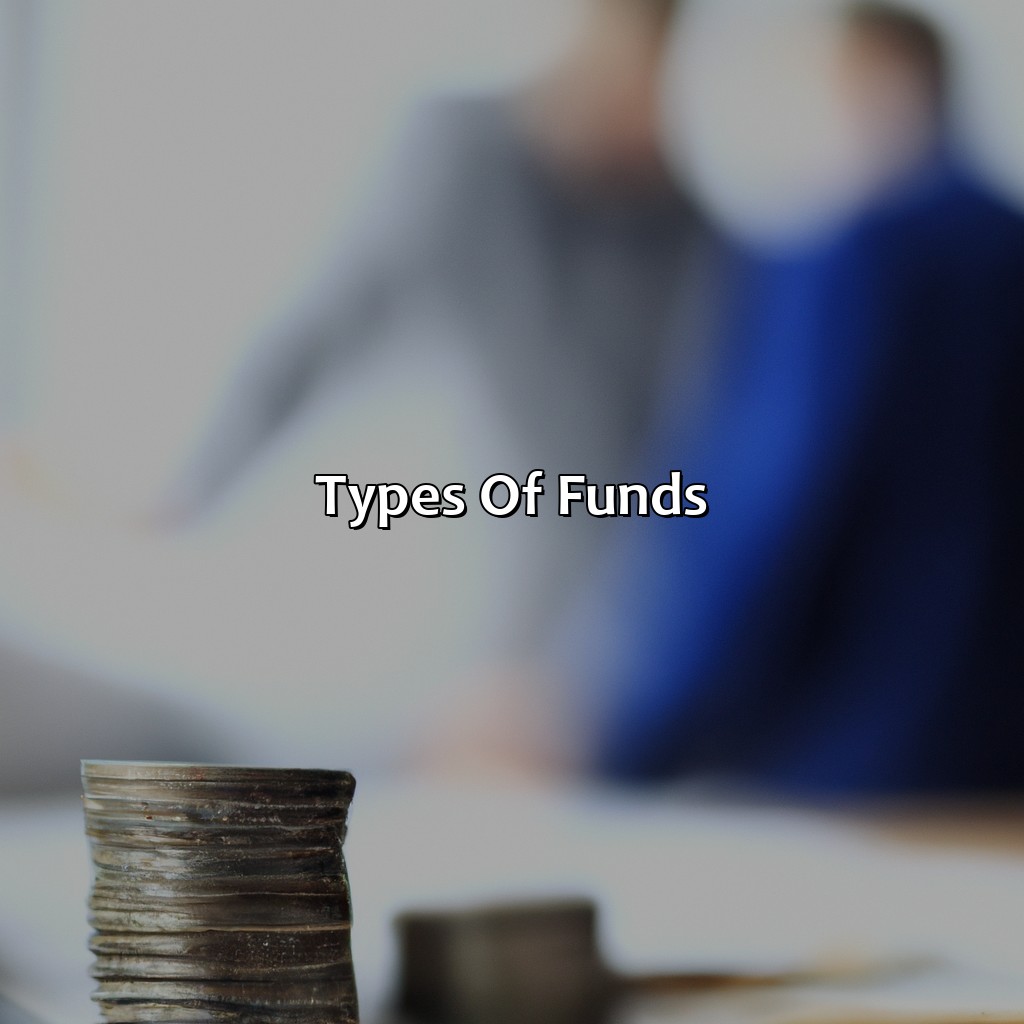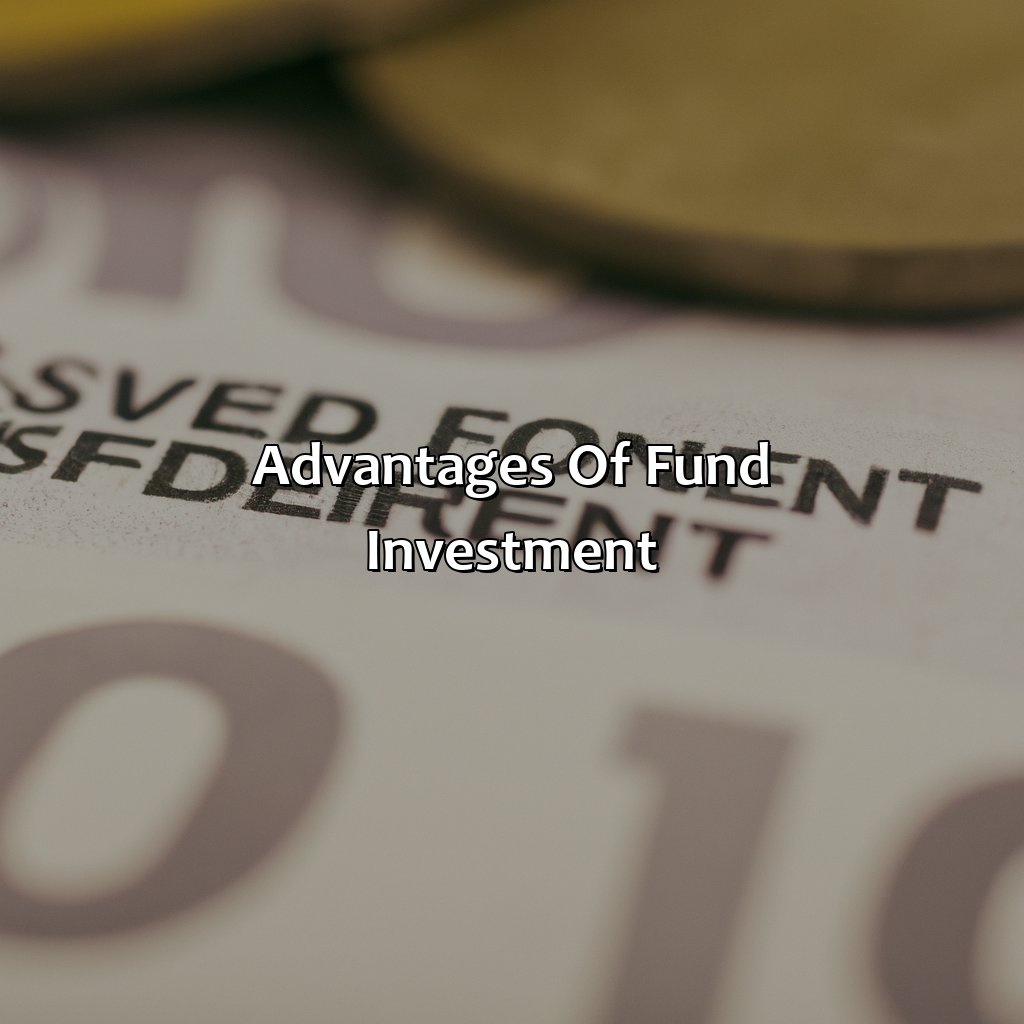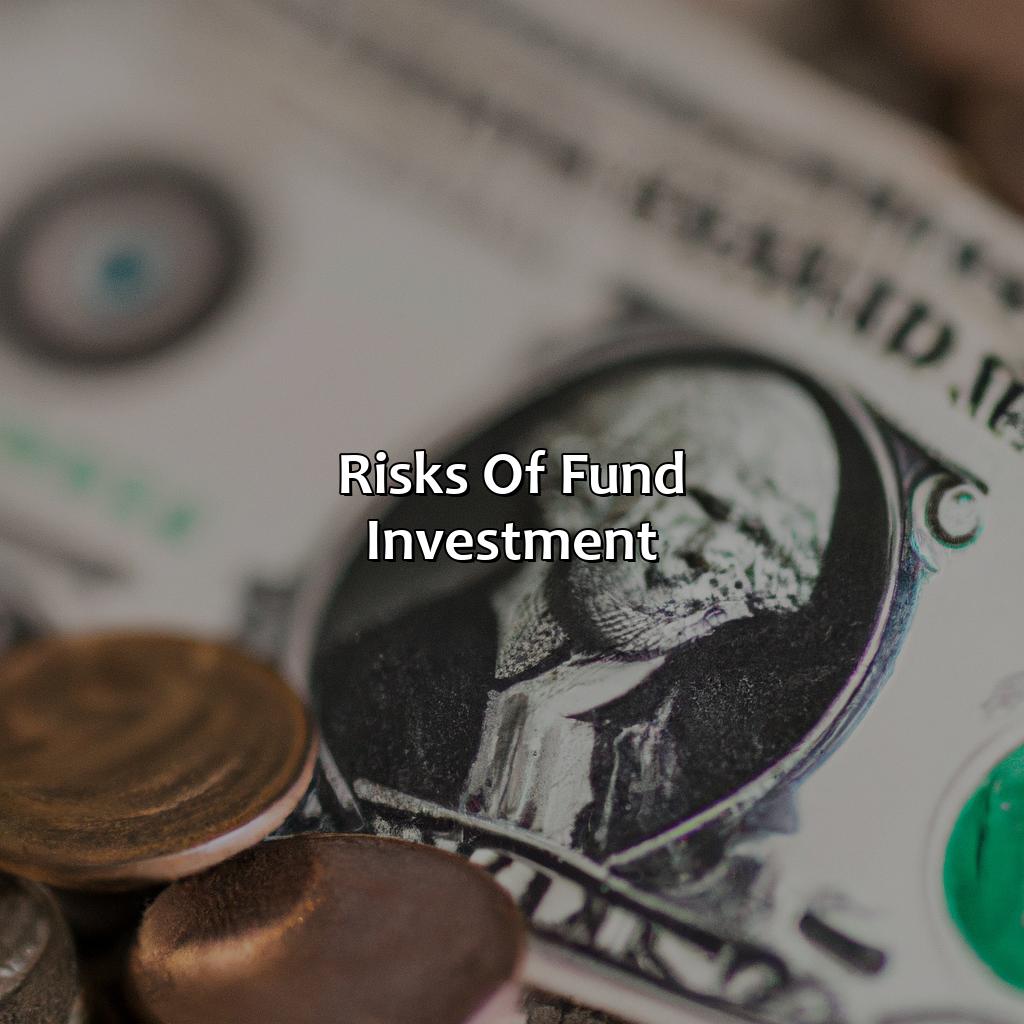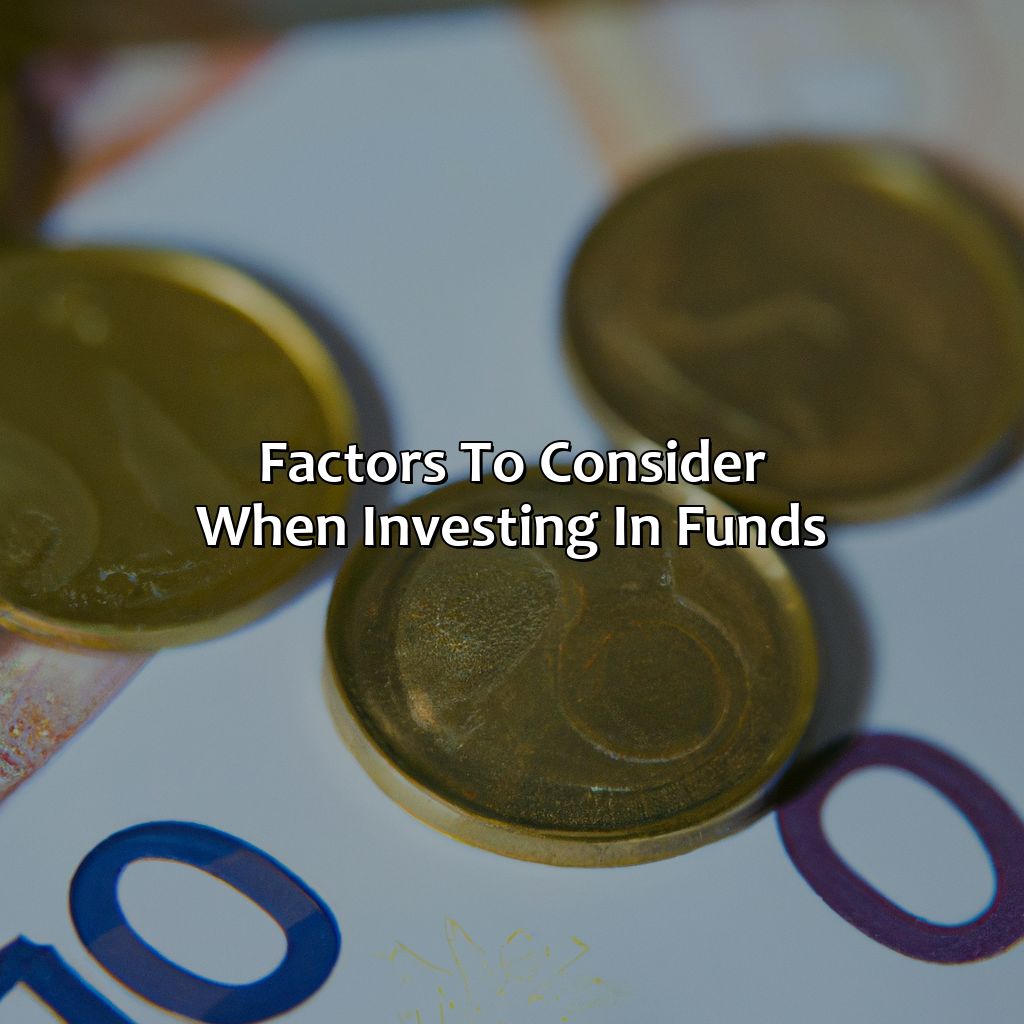What Is Fund Investment?
Key Takeaway:
- Fund investment refers to the pooling of money from multiple investors to invest in a variety of stocks, bonds, or other securities, providing diversification and potentially higher returns than individual investments.
- There are several types of funds available, including mutual funds, exchange-traded funds (ETFs), and hedge funds, each with its own advantages and disadvantages.
- The benefits of fund investment include diversification, professional management, and low minimum investment, making it an attractive option for novice investors.
- However, fund investment also carries risks such as market risk, managerial risk, and liquidity risk, which investors need to consider carefully before investing.
- Factors to consider when investing in funds include performance history, fees and expenses, and investment objectives, which can help investors make informed decisions and maximize their returns.
Are you struggling to understand fund investments? This article provides an overview of fund investments, including benefits, risks and how to get started. You’ll be well-equipped to make informed decisions about your finances.
Types of Funds
Gain a better understanding of investment options available to you by turning your attention to ‘Types of Funds’. This section looks into mutual funds, exchange-traded funds (ETFs) and hedge funds. Learn about these sub-sections and you’ll be able to comprehend the various types of funds.

Image credits: retiregenz.com by James Arnold
Mutual Funds
The benefits of investing in mutual funds include:
- Investment diversification with access to a wider range of securities
- Professional management and expertise
- Liquidity due to the ability to buy and sell units at any time
- Low initial investment amounts as compared to buying individual securities
- Tax efficiency, as gains are distributed among all investors in proportion to their holdings
Comprehending the underlying workings of a mutual fund is crucial for picking the appropriate fund that satisfies individual investing objectives.
It’s important to note that mutual funds fees could vary depending on various factors like size and type of the fund. Understanding the fee structure is essential when selecting an appropriate mutual fund.
Don’t miss out on investing opportunities by neglecting important research on mutual funds before taking action. Take advantage of the benefits that mutual funds can offer by informing yourself appropriately.
ETFs: because some people prefer their investments like their avocado toast, with a side of instant gratification.
Exchange-Traded Funds (ETFs)
ETFs: A type of fund investment that is traded on stock exchanges. It aims to replicate an index’s performance and allows investors to buy or sell shares throughout the trading day.
Diversifying risk is vital, ETFs track an index, sector, or commodity. It helps spread investments across various asset classes suitable for a risk-tolerant investor interested in long-term growth.
ETFs proffers flexibility in your portfolio, allowing investors to buy/sell anytime during the trading hours, and at instant prices without waiting for NAV pricing at closing. It boasts low expense ratios, making them cost-effective relative to mutual funds.
Statista reported that as of 2021 Q1, BlackRock iShares was leading the global ETF market share with approximately $3.2 trillion in assets under management (AUM).
Be careful investing in hedge funds, because their returns can be as unpredictable as a cat on a hot tin roof.
Hedge Funds
Investments in alternative assets like Nontraditional Hedge Funds enable individuals and sophisticated investors to engage in less restricted, more complex investment strategies than traditional Long-only funds. These types of funds typically employ diverse and often leveraged methodologies as an endeavor to generate absolute returns regardless of their benchmarks. Investors must realize that these funds can carry a high degree of risk.
Hedge Fund Strategies and Fees
Hedge Funds may have investment strategies that range from merger arbitrage, equity market-neutral, or global macro. Usually set up as limited partnerships, such funds charge steep fees which include both management and performance carried interest allocations with lock-up periods.
This type of fund is designed for exceptionally wealthy individuals and institutional investors due to its minimum investment threshold limits.
To discover your perfect match according to your individual goals, knowledge, and expertise level when it comes to investing in alternative investments like hedge funds; consider establishing relationships with financial advisors who are licensed and possess extensive knowledge about the diversification potential that Hedge Funds bring.
“Why invest in one company when you can invest in a whole bunch and watch them all go down together? That’s the beauty of fund investment.”
Advantages of Fund Investment
Maximize your returns! Invest in funds. Many advantages come with it. Diversification brings stability. Professional management makes sure you make wise decisions. Low investment thresholds make it available to everyone. Learn the details of each sub-section. Benefit from fund investment in your portfolio.

Image credits: retiregenz.com by Adam Washington
Diversification
Investing in a variety of assets is an effective way to mitigate risks, ensure returns, and create balance. A multi-asset strategy accomplishes this by spreading investments across different markets, geographies, and industries. These funds can include equities, fixed income products, commodities, real estate, and alternative investments. The risk associated with one asset does not affect the entire portfolio as there is less correlation between the different asset classes within it.
Moreover, diversification eliminates concentration risk by reducing exposure to specific companies or sectors. As fund managers monitor portfolio performance regularly, they may also shift the allocation in response to any changes in market dynamics or economic situations to optimize returns.
Adding international or emerging-market exposure within portfolios provides additional geographic diversification which helps mitigate currency fluctuations that occur when global financial activities impact exchange rates. Target-date funds further provide a level of age diversification by balancing investments based on expected retirement dates.
According to Morningstar’s latest data analysis report* (2021), investors chose diversified equity and bond funds most frequently for new investment purchases made during 2020.
* (Source: https://www.morningstar.com/insights/2021-us-asset-flows-report)
With professional management, you can trust that your funds are in good hands, unless the manager is secretly a clown.
Professional Management
Investing in funds provides the benefit of expert supervision. This involves entrusting your investment to financial professionals for portfolio management. It eliminates the need for individual monitoring of market trends and analyzing securities as a personal investor would.
Professional management reduces risk and provides potential higher returns compared to solely managing one’s own investments. As fund managers have specialized education, training, and experience, they conduct research on investment opportunities in various industries and sectors.
Additionally, fund managers can adjust the fund’s holdings according to economic changes, market fluctuations, and their respective performance metrics while maintaining diversification.
Investing in mutual funds not only opens up investment opportunities but also ensures that your assets are managed by competent individuals who work towards achieving the investor’s goals. The management fees are minimal in comparison to hiring an individual professional to manage finances separately, providing an effective solution for those looking to invest without facing undue risk.
Take advantage of the professional expertise offered by professionally managed funds, which is critical to secure a better future financially. Don’t miss out on significant gains offered through this means of investing!
Why start small when you can start low? Fund investment gives you the opportunity to dive in with a minimal upfront investment.
Low Minimum Investment
Investing in funds requires a relatively low entrance amount, allowing novice investors access to larger portfolios. As an alternative to investing directly into stocks or bonds, funds can offer diversification with as little as $50.
A low minimum investment can attract more cautious investors, who may experience less anxiety about losing their initial capital. Furthermore, the small increments can allow for gradual investment expansion and increased confidence over time.
It’s worth noting that some fund types may require larger amounts for further access to its full advantages. Nevertheless, using small investments to gain initial exposure to the market is still an affordable option for beginners.
Don’t miss out on the advantages of beginning your investment journey with little money down. Start with a small sum and allow it to grow over time through consistent contributions and reinvestment of dividends.
Ready to embrace the thrill of the financial rollercoaster? Strap in for the risks of fund investment.
Risks of Fund Investment
Grasp the potential pitfalls to fully understand the risks of fund investment. These risks include market risk, managerial risk, and liquidity risk. As a potential investor, weigh these against the potential rewards. Then decide if the fund is right for you.

Image credits: retiregenz.com by Yuval Arnold
Market Risk
Investing in funds comes with various risks, one of which is the danger of suffering from volatile market shifts, also known as Volatility Risk. This type of risk involves the uncertainty and unpredictability of financial markets, leading to changes in prices and fluctuations that can significantly affect your investments.
The primary reasons for market risk are often attributed to political instability, changes in economic policies and conditions, global events, or natural disasters. Market risks are inherent in most investment endeavors and cannot be entirely avoided. In a worst-case scenario, investors may lose their entire capital or experience negative returns on their investments.
To manage market risk effectively, investment managers undertake measures such as diversification into various asset classes and monitoring of the market trends regularly. Additionally, some investors opt to implement stop-loss orders or purchase put options as a form of hedging against potential losses.
Pro Tip: It’s crucial to factor in potential market risks before investing in funds. Ensure you have a well-designed portfolio that aligns with your investment goals and risk tolerance levels. Don’t put all your trust in a fund manager, unless their crystal ball works better than the rest of ours.
Managerial Risk
The risk of inefficient management in fund investment can significantly impact returns. The problem may be because of improper portfolio allocation, ineffective trading strategies and inconsistency in financial reporting. Investors should look for assurance that the fund manager has sufficient knowledge, experience, and resources to handle their investments.
The managerial risk is not only about selecting a competent fund manager but also paying attention to potential irregularities or suboptimal performance indicators. It’s crucial to know the resources utilized by the professional managers—the systems they use regarding risk analysis ad trade executions, as well as their commitment and involvement concerning activities relating to your funds.
While it is essential to have expertise in selecting top-rated portfolio managers, fees decision making might not relate entirely only to skills but also contingencies that arise from different funds’ objectives’ allocations. Investors need not be swayed by the inconsistent fee pricing—study what each fee item means (management fee, front-end load, back-end load) before investing.
A significant example of poor managerial judgment was Lehman Brothers Inc.’s bankrupt condition in 2008; investors who had little information about how loans were granted at the senior executive levels could lose billions. While profits are important consideration for investors, understand that creating an effective structure which provides transparency over potential risks on fund investments requires diligent effort beyond assessing past performance ratings.
Why keep cash in your pocket when you can just invest in a fund and experience the thrill of not being able to access your money when you really need it?
Liquidity Risk
Investments in funds are subject to various risks, including the risk of not being able to convert an investment into cash immediately. This is known as liquidity risk. In simple terms, liquidity risk arises when investors cannot sell their investment quickly enough to meet their financial needs.
Liquidity risk is significant because it can lead to financial losses and make it challenging for investors to exit from investments made in funds. Funds that invest in less liquid assets such as private equity or property are more exposed to liquidity risk than those that invest in more liquid assets like stocks or bonds.
One way to mitigate this risk is by investing in funds with high levels of liquidity. These types of funds have a large pool of assets available to trade on a daily basis and can facilitate quick redemptions without eroding the asset value significantly.
In general, investors need to be aware of liquidity risks before committing capital, especially when investing in more complex and illiquid assets like hedge funds. Evaluating the historical performance and current market conditions may provide insight into the magnitude and likelihood of encountering the adverse effects of liquidity risks.
Remember, investing in funds isn’t just a leap of faith, it’s more like a tightrope walk over a pool of sharks.
Factors to Consider When Investing in Funds
When investing in funds, you must be wise. Be aware of what affects your investment. This section on “Factors to Consider When Investing in Funds” provides solutions. It covers “Performance History, Fees and Expenses, Investment Objectives”. These subsections are important when making investments.

Image credits: retiregenz.com by Joel Arnold
Performance History
For those interested in investing in funds, evaluating the fund’s Performance History is crucial. By examining historical returns and analyzing the fund’s performance over time, investors gain insight into investment trends and risk levels.
Below is a graphical representation of the Performance History of the ABC Fund from January 2018 to December 2020:
| Date | NAV per Share |
|---|---|
| Jan18 | $100 |
| Feb18 | $105 |
| Mar18 | $112 |
| … | … |
| Nov20 | $225 |
| Dec20 | $240 |
As you can see, the NAV per share has consistently increased for the ABC Fund over three years, indicating strong portfolio management and market analysis. However, past performance does not guarantee future results and should be analyzed along with other factors when making investment decisions.
Another important factor to consider when investing in funds is expense ratios, which can significantly impact an investor’s returns. Be sure to thoroughly research and compare expense ratios across funds before investing.
Pro Tip: When analyzing a fund’s performance history, make sure to account for market trends and economic conditions during that period to better understand how the fund may perform in different conditions.
Remember, you’re not just paying for the investment, you’re also funding your fund manager’s yacht trips to the Bahamas.
Fees and Expenses
Costs Associated with Investing in Funds
Investing in funds involves several costs and expenses that are essential to consider before making any investment. The fees and expenses of investing in a fund can greatly affect the return on investment, making it crucial to understand them.
The following table illustrates the fees and expenses associated with investing in a fund:
| Fee/Expense | Definition |
|---|---|
| Management fee | The fee charged by the fund manager for managing the portfolio |
| Expense ratio | The total annual cost of running the fund expressed as a percentage of its assets |
| Sales charge | A commission charged for buying or selling shares of a mutual fund |
| Redemption fee | A charge imposed when an investor sells shares of a fund shortly after purchasing them |
It’s worth noting that not all funds have sales charges or redemption fees, so it’s important to read all relevant documentation before investing.
In addition, some funds may have other costs such as account maintenance fees and custodial fees. It’s important for investors to have a thorough understanding of these fees before investing.
For example, Jane invested $10,000 in a mutual fund with an expense ratio of 1%. After holding onto her investment for five years, she sold her shares at $12,000. However, due to the expense ratio reducing her returns each year by 1%, she only made a profit of $1,015 instead of $2,000.
Therefore, understanding and considering the costs associated with investing in funds is critical for achieving successful results. Choose your investment objectives wisely, unless your goal is to collect can tabs and build a throne, then by all means, invest in aluminum.
Investment Objectives
When considering potential investments, it is crucial to establish a clear set of objectives. This involves identifying the reasons for investing and the desired financial outcomes. By doing so, it becomes easier to select the most appropriate funds that align with these goals. Investment objectives can vary greatly and may include capital growth, regular income streams, or preserving wealth.
To determine the most suitable funds for an investor’s objectives, it is important to assess various factors such as the fees associated with each fund, their level of risk, and historical performance. For instance, a high-risk investment may offer substantial returns but comes with an increased possibility of loss. Therefore, investors need to carefully consider their risk appetite before investing in any particular fund.
An investor’s age/retirement time frame is another essential factor to be considered when selecting funds. Generally speaking, younger investors should consider higher-risk options as they have more time to recover from losses and may benefit from long-term capital gains. In contrast, older investors may opt for lower risk options that prioritize wealth preservation.
Pro Tip: Before investing in any particular fund or diversifying one’s portfolio across multiple ones, it would be best to consult a financial advisor who specializes in funds management for expert insights and advice on how best to achieve financial goals.
Five Facts About Fund Investment:
- ✅ Fund investment is a way of pooling money together from multiple investors to purchase securities such as stocks, bonds, or real estate. (Source: Schwab)
- ✅ There are different types of funds to choose from, including mutual funds, exchange-traded funds (ETFs), and hedge funds. (Source: Fidelity)
- ✅ Fund managers make investment decisions on behalf of investors, with the goal of maximizing returns and minimizing risks. (Source: Investopedia)
- ✅ Diversification is a key benefit of fund investment, as it allows for spreading risk across different types of investments. (Source: Forbes)
- ✅ Fund investment requires regular monitoring and rebalancing to ensure the portfolio aligns with the investor’s goals and risk tolerance. (Source: The Balance)
FAQs about What Is Fund Investment?
What is fund investment?
Fund investment is the practice of pooling money from various investors to invest in different securities such as stocks, bonds, and other financial instruments with the goal of achieving a specific objective.
What are the different types of funds one can invest in?
There are different types of funds one can invest in, including mutual funds, exchange-traded funds (ETFs), index funds, closed-end funds, and hedge funds. Each type of fund has its unique characteristics, fees, and risk profiles.
What are the advantages of fund investment?
Fund investment offers several advantages, including diversification of investments, professional management, liquidity, accessibility, and convenience, among others.
How does one invest in a fund?
To invest in a fund, you need to open an account with a brokerage firm or a fund provider and complete the required paperwork. You can then choose the type of fund to invest in and the amount to invest.
What fees are associated with fund investment?
Fund investment fees include management fees, expense ratios, and transaction fees. These fees can have a significant impact on investment returns and should be considered when choosing a fund.
What are the risks associated with fund investment?
The risks associated with fund investment depend on the type of fund. Some of the common risks include market risk, liquidity risk, credit risk, and concentration risk.
